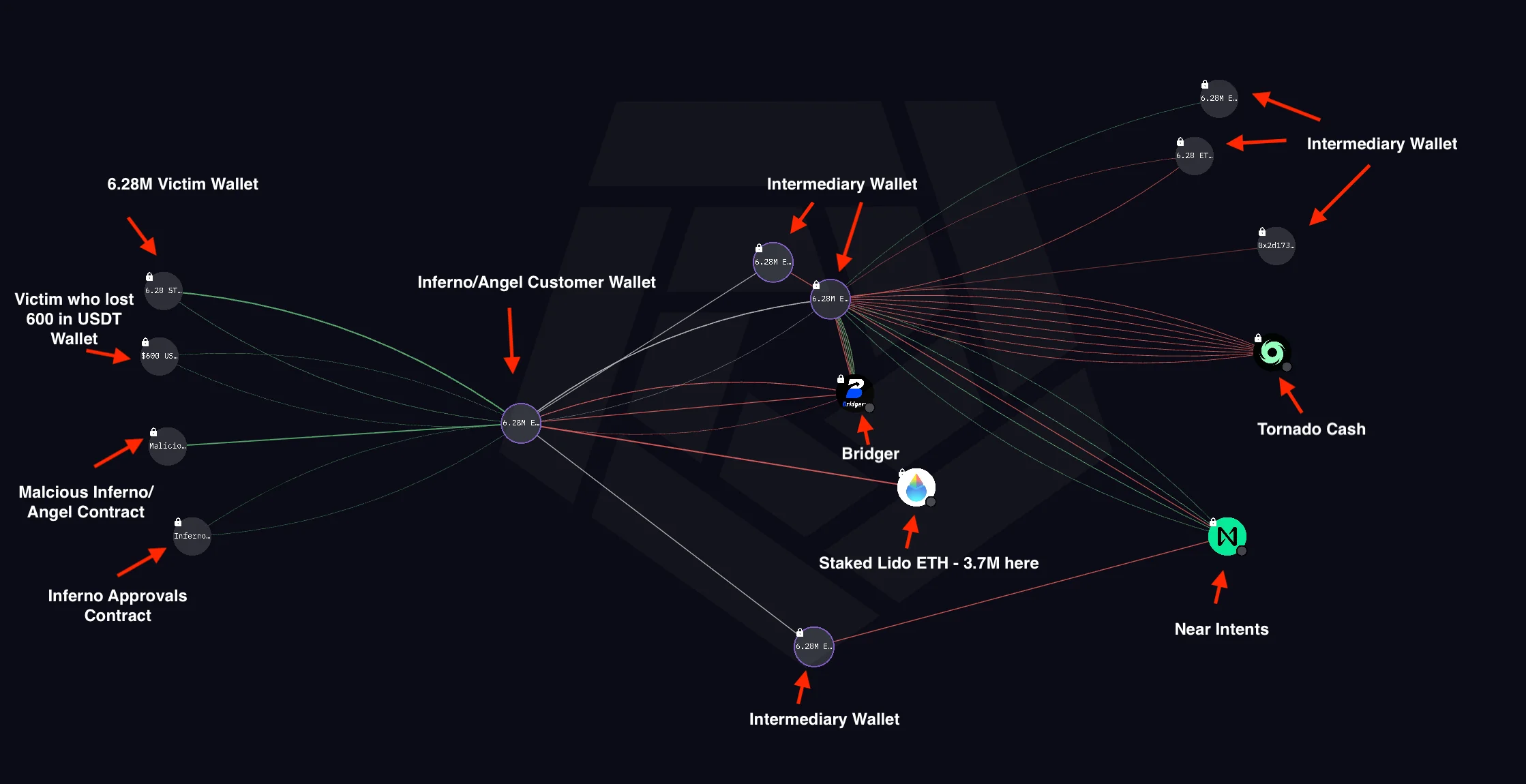A crypto phishing scam is a fraudulent trick that convinces a user to sign a malicious transaction or approval, giving attackers access to wallets. In this case a single phishing link cost a whale about $6.8M, exposing ~$4.3M in staked ETH and ~$2.2M in wrapped BTC.
-
Whale lost $6.8M via a signature phishing scam.
-
August 2025 saw $163M stolen—a 15% rise month-over-month.
-
Total crypto hacks in 2025 have exceeded $2.5B; largest was a $1.5B exploit.
Crypto phishing scam report: crypto phishing scam cost a whale $6.8M; learn how to verify signatures and protect assets. Read actionable protection steps now.
Key Takeaways
What happened?
A large holder lost nearly $6.8 million after approving a malicious signature request, a classic crypto phishing scam.
What’s the state of crypto hacks in 2025?
Crypto attacks have surged; August recorded $163 million stolen (a 15% increase), bringing 2025 losses above $2.5 billion.
A prominent on-chain user mistakenly signed permission requests that authorized an attacker to transfer funds. The exploit exposed about $4.3 million in staked Ethereum (ETH) and roughly $2.2 million in wrapped Bitcoin (WBTC).
Blockchain analysts traced rapid fund movement across multiple addresses and mixing services, with laundering activity observed shortly after the theft. Security firms such as Peckshield reported the monthly uptick in exploits.

Source: Reddit
What is a crypto phishing scam and how does it work?
A crypto phishing scam tricks users into signing malicious transactions or approvals that grant attackers token transfer rights. Attackers typically use lookalike interfaces or deceptive links; once a signature is granted, funds or allowances can be moved without further confirmation.
How did the $6.8M signature phishing attack unfold?
The victim interacted with a fraudulent link and approved a contract signature that requested broad token allowances. The attacker immediately moved approximately $4.3M in staked ETH and $2.2M in wrapped BTC. On-chain monitoring revealed fast distribution across multiple addresses and mixing services.
Why are phishing and signature-based exploits increasing in 2025?
Greater DeFi complexity and more frequent third-party approvals expand attack surface. In August 2025, Web3 security monitors recorded about $163 million stolen across ~16 major incidents—up 15% from July—pushing total 2025 losses above $2.5 billion. The February $1.5B Bybit incident remains the largest single event this year.
Frequently Asked Questions
How can I verify a signature request is safe?
Check the exact contract address on a trusted block explorer, confirm the requested function and allowance size, and never accept blanket approvals. When in doubt, decline and verify with official project channels or use a hardware wallet for confirmation.
Can stolen crypto be recovered?
Recovery is difficult once funds are moved through mixers and multiple chains. Law enforcement and blockchain analytics firms can sometimes trace flows, but restitution is rare. Quick reporting and forensic cooperation improve recovery chances.
What immediate actions should a victim take after a phishing loss?
Revoke approvals, transfer remaining assets to a new wallet (if safe), preserve transaction IDs, and contact blockchain analytics teams and relevant exchanges to flag suspicious addresses. Document all on-chain activity for investigators.
How to prevent signature phishing — Step-by-step
- Inspect links and URLs: Use bookmarks and type official URLs manually; avoid clicking links from unknown sources.
- Review signature details: Confirm the exact contract address and allowance amount in the wallet prompt.
- Use hardware wallets: Require physical confirmation for signatures to block remote approvals.
- Limit approvals: Approve minimal allowances and revoke unused permissions regularly.
- Monitor on-chain: Use reputable analytics tools to watch high-value wallets and set alerts.
Key Takeaways
- Act quickly: Revoke approvals and move unaffected funds to a secure wallet after suspicious activity.
- Verify signatures: Always inspect contract addresses and requested permissions before approving.
- Use hardware wallets: Physical confirmation significantly reduces phishing risk.
Conclusion
Signature-based crypto phishing scams remain a top threat in 2025, exemplified by a recent $6.8M loss that exposed staked ETH and wrapped BTC. Strengthening signature verification, revoking unnecessary approvals, and using hardware wallets are practical defenses. Stay vigilant and prioritize on-chain hygiene to reduce attack risk.
